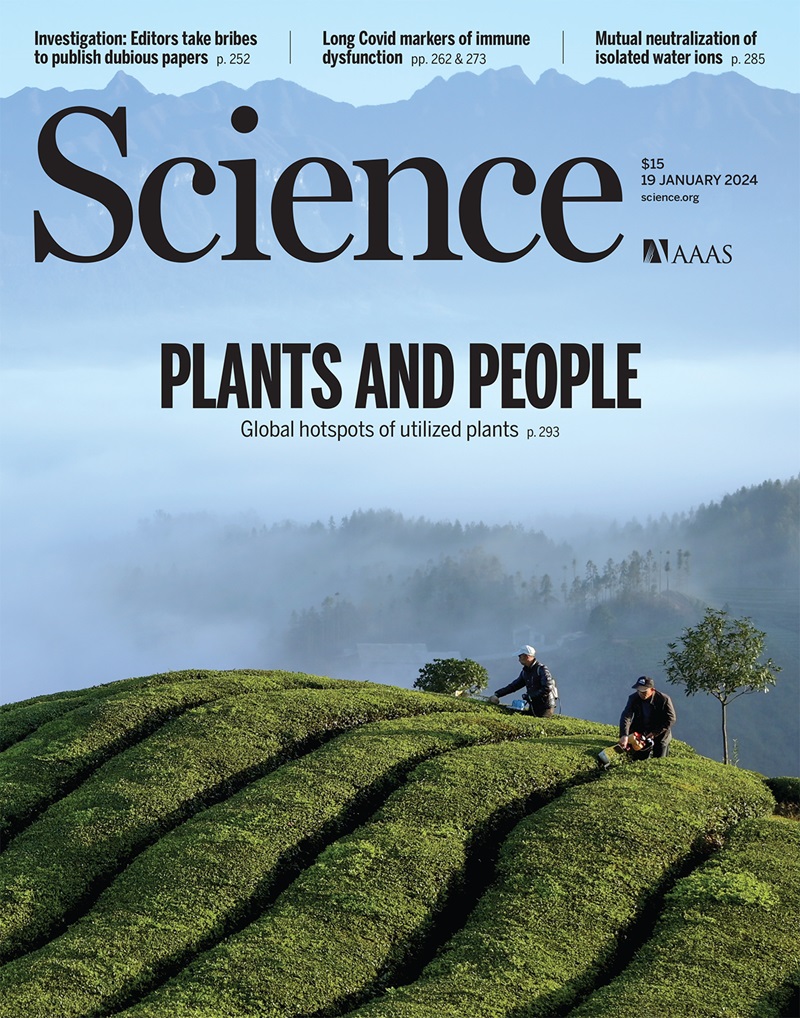Evidence for Hadean mafic intrusions in the Nuvvuagittuq Greenstone Belt, Canada
IF 44.7
1区 综合性期刊
Q1 MULTIDISCIPLINARY SCIENCES
引用次数: 0
Abstract
Many questions remain regarding Earth’s earliest crust owing to the rarity of Hadean (>4.03 billion-year-old) rocks and minerals. The Nuvvuagittuq Greenstone Belt (NGB) in Canada may be the only known remnant of Hadean crust, although its age is debated, ranging from ≥3.75 to 4.3 billion years old. Mafic intrusions within this belt were specifically sampled and analyzed to investigate the timing of their magmatic differentiation. Correlations between samarium/neodymium (Sm/Nd) and 143Nd/144Nd and 142Nd/144Nd ratios correspond to ages of 4157 ± 174 and million years for the long-lived 147Sm-143Nd and the short-lived 146Sm-142Nd systems, respectively. The age agreement between both extant and extinct radiogenic systems, in rocks related through igneous fractionation, is compelling evidence for preservation of Hadean rocks in the NGB, opening a rare window into Earth’s earliest times.
加拿大Nuvvuagittuq绿岩带冥古宙岩浆入侵的证据
由于冥古宙(40.3亿年前)岩石和矿物的稀少,关于地球最早的地壳还有许多疑问。加拿大的Nuvvuagittuq绿岩带(NGB)可能是唯一已知的冥古宙地壳遗迹,尽管它的年龄在37.5到43亿年之间存在争议。对该带内的基性侵入岩进行了具体采样和分析,探讨了其岩浆分异的时间。钐/钕(Sm/Nd)、143nd / 144nd和142nd / 144nd的相关性分别对应于寿命较长的147sm - 143nd体系和寿命较短的146sm - 142nd体系的年龄分别为4157±174和4196−81 + 5300万年。现存和灭绝的放射性成因系统之间的年龄一致,通过火成岩分异,是NGB保存冥古宙岩石的有力证据,打开了一扇罕见的窗口,了解地球最早的时代。
本文章由计算机程序翻译,如有差异,请以英文原文为准。
求助全文
约1分钟内获得全文
求助全文
来源期刊

Science
综合性期刊-综合性期刊
CiteScore
61.10
自引率
0.90%
发文量
0
审稿时长
2.1 months
期刊介绍:
Science is a leading outlet for scientific news, commentary, and cutting-edge research. Through its print and online incarnations, Science reaches an estimated worldwide readership of more than one million. Science’s authorship is global too, and its articles consistently rank among the world's most cited research.
Science serves as a forum for discussion of important issues related to the advancement of science by publishing material on which a consensus has been reached as well as including the presentation of minority or conflicting points of view. Accordingly, all articles published in Science—including editorials, news and comment, and book reviews—are signed and reflect the individual views of the authors and not official points of view adopted by AAAS or the institutions with which the authors are affiliated.
Science seeks to publish those papers that are most influential in their fields or across fields and that will significantly advance scientific understanding. Selected papers should present novel and broadly important data, syntheses, or concepts. They should merit recognition by the wider scientific community and general public provided by publication in Science, beyond that provided by specialty journals. Science welcomes submissions from all fields of science and from any source. The editors are committed to the prompt evaluation and publication of submitted papers while upholding high standards that support reproducibility of published research. Science is published weekly; selected papers are published online ahead of print.
 求助内容:
求助内容: 应助结果提醒方式:
应助结果提醒方式:


